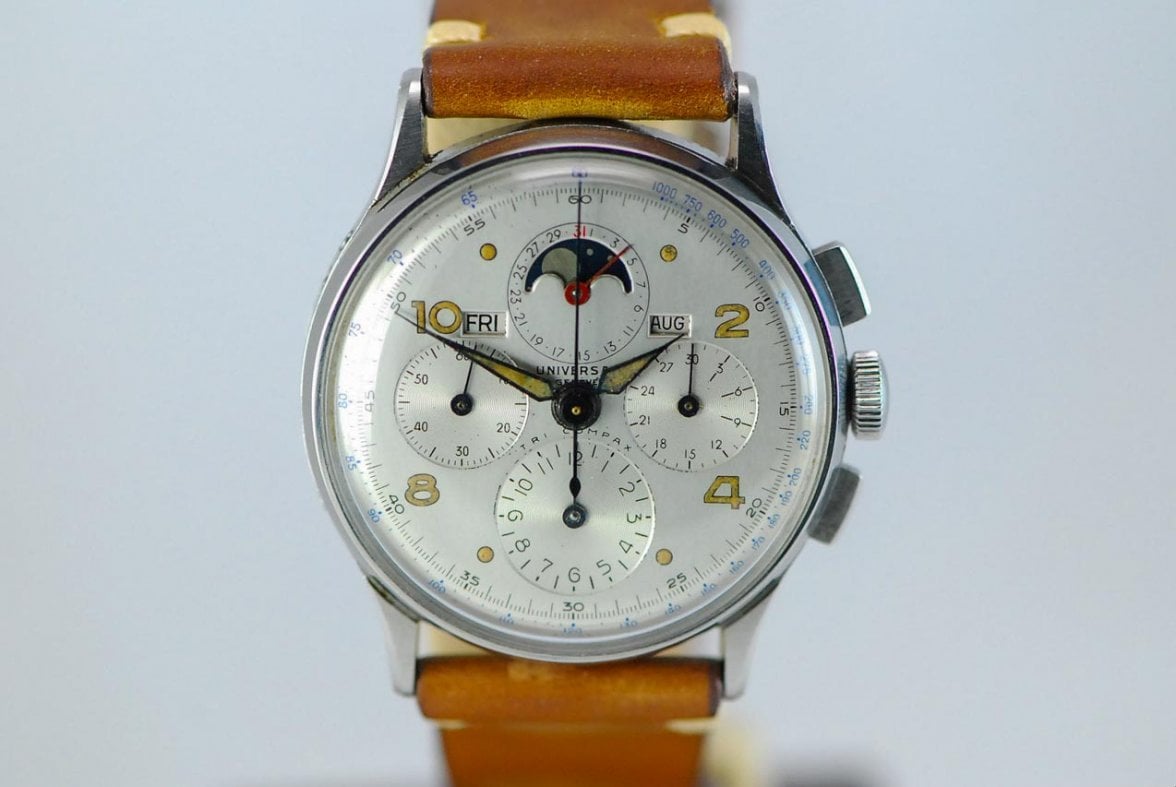jordn
·Wow, nicely done gentlemen. As an enthusiast and student of dial authentication, I am appreciative of all of the due diligence done here in this thread. I'm still reeling from the results of the election here stateside, but this forum and its members never fail to be a reprieve from the foilings of life. Ok, enough brown-nosing 😁
Not really much I can add except to say that I agree with the conclusion that the dial in question is indeed an original finish example. One thing to note is that this particular dial variation has thicker logo font on top of the aforementioned pointed 6's/9's and lack of dash in "Tri-Compax". 100% of these dials that I have seen have this defining feature. Note the differences between these two:
However I disagree with buba when he says that these are later service dials (unless something was lost in translation and I misunderstood). UG had long since abandoned using these types of dials by the 60's, and according to UG watchmaker manuals found by woodwkr2, watchmakers were instructed to do redials instead of providing service replacements as a cost cutting measure. Asking dial makers to create non-contemporary dials seems like an unlikely expenditure for the manufacture. I suppose it is still possible that these are service dials, but I haven't seen evidence to support that. The examples we've already seen in this thread appear to be honest overall.
Not really much I can add except to say that I agree with the conclusion that the dial in question is indeed an original finish example. One thing to note is that this particular dial variation has thicker logo font on top of the aforementioned pointed 6's/9's and lack of dash in "Tri-Compax". 100% of these dials that I have seen have this defining feature. Note the differences between these two:
However I disagree with buba when he says that these are later service dials (unless something was lost in translation and I misunderstood). UG had long since abandoned using these types of dials by the 60's, and according to UG watchmaker manuals found by woodwkr2, watchmakers were instructed to do redials instead of providing service replacements as a cost cutting measure. Asking dial makers to create non-contemporary dials seems like an unlikely expenditure for the manufacture. I suppose it is still possible that these are service dials, but I haven't seen evidence to support that. The examples we've already seen in this thread appear to be honest overall.











